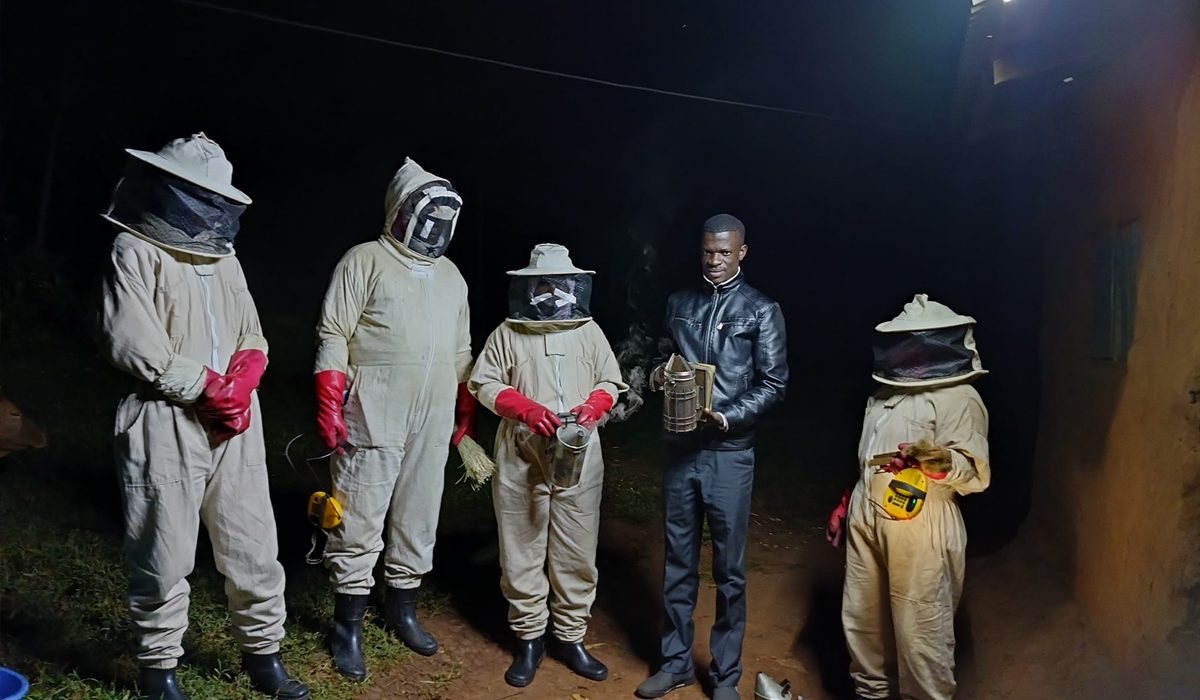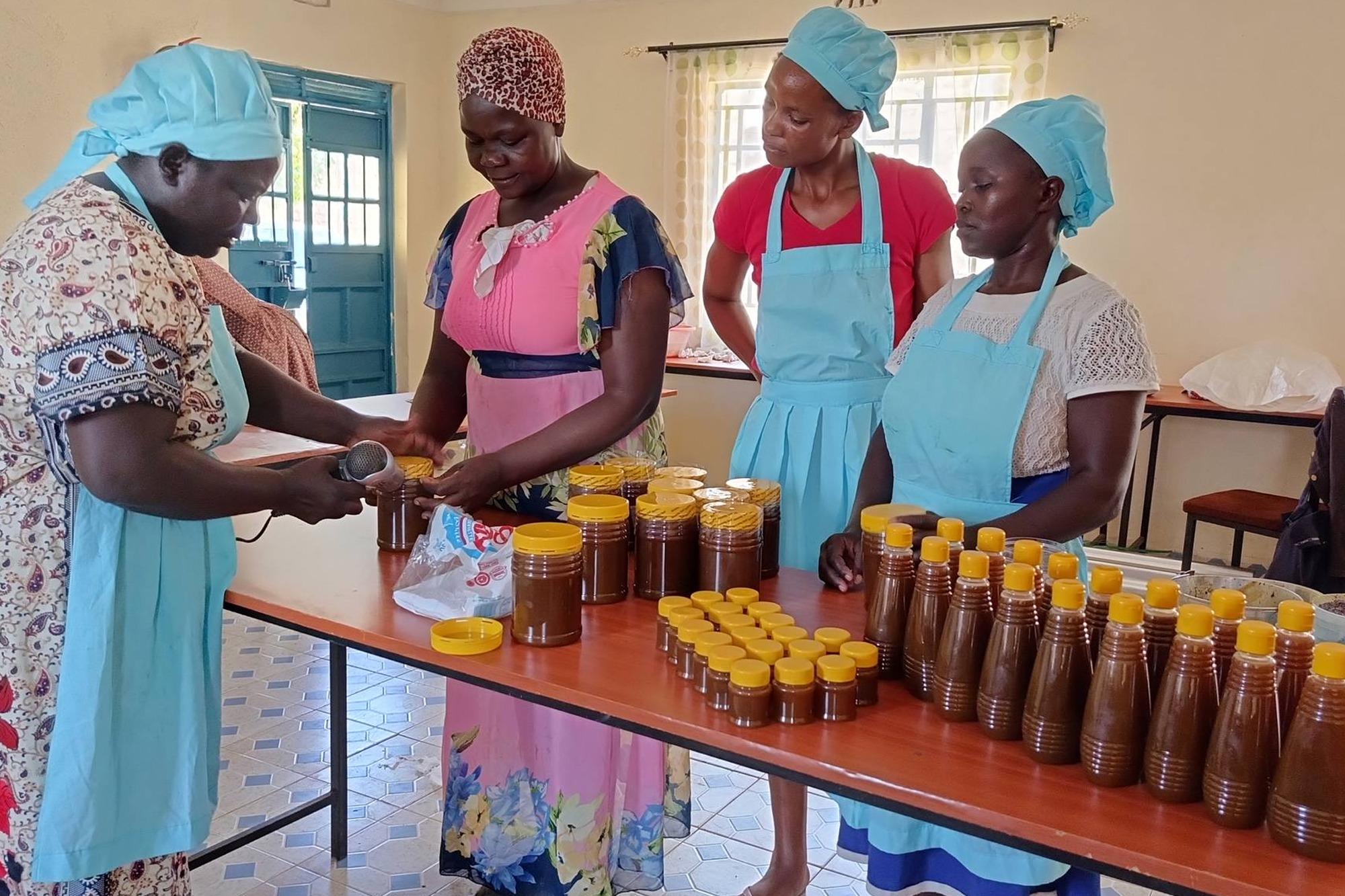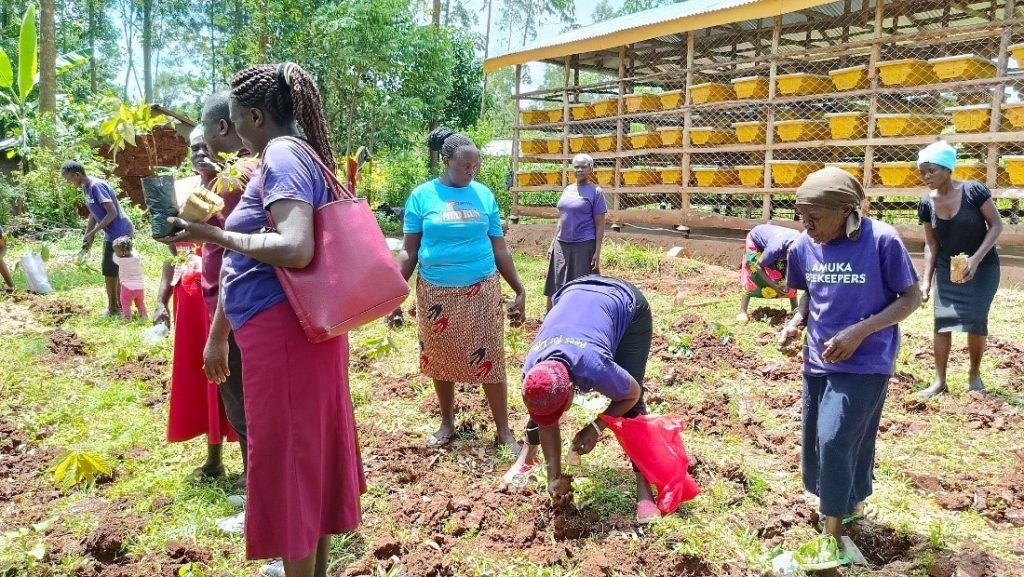
KE0362 PAG AMALEMBA CDC BEST PRACTICES FOR OUR BEEKEEPING PROJECT SUSTAINABILITY
Proper Apiary Management
We have put in place the following measures for proper apiary and hive management:
- Construction of five modern apiary shelters with a capacity for more hives in future expansions.
- Honeybee colonies should be inspected at least once a month. The purpose of inspecting is to know the bees very well, know the colonies that are of good temperament, honey producers, hardworking and less tendency to swarming in order to keep multiplying/increasing the number of colonies in the apiaries.
- Keep the apiary clean by slashing all the weeds in the apiary. This puts away pests, which might attack the bees such as ants or beetles.
- Grease the wires very often to avoid other insects from crawling into the hives. During inspection, check the inside of the hives for any insects or pests, which might disturb the bees, e.g. rats.
- Check for any abnormal behavior of bees at the entrance. Behavior can tell you what might be inside of the hive – clusters along the entrance might indicate too much heat or hive is full of combs or bees want to swarm.
- Check if the hive is stable, standing well or if any nail is coming out and replace it. Sometimes complete repair of the hive might be necessary.
- Plant more bee plants in and around the apiary to ensure that the bees are provided with enough forage.
- Provision of a bee house helps on a rotational basis by the caregivers/farmers to; Enhance security of the hives, Provide shade especially in hot areas and Control pests and predators.
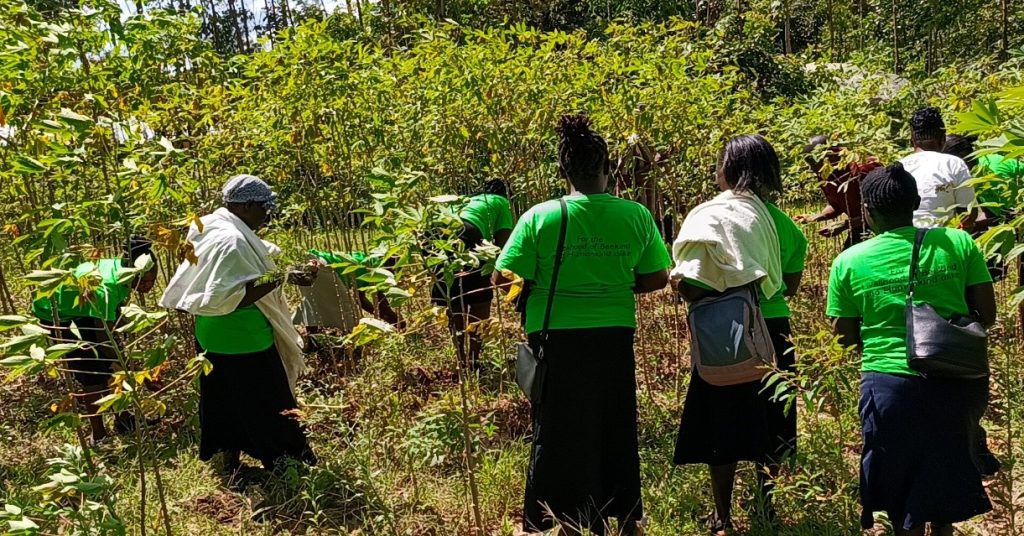
Environmental Conservation
By restoring healthier bee populations and using management care for bees in a way that respects their natural processes can improve the ecological agriculture which can help pollination. Each group will ensure their colony has plenty of foraging opportunities.
Our sustainable beekeeping starts with simply planting a garden with bee-friendly plants and flowers around the apiary shelters. It’s no secret that bees have to get their resources somewhere outside the hive, and planting pollen- and nectar-rich plants on your property is the best option to give them what they need.
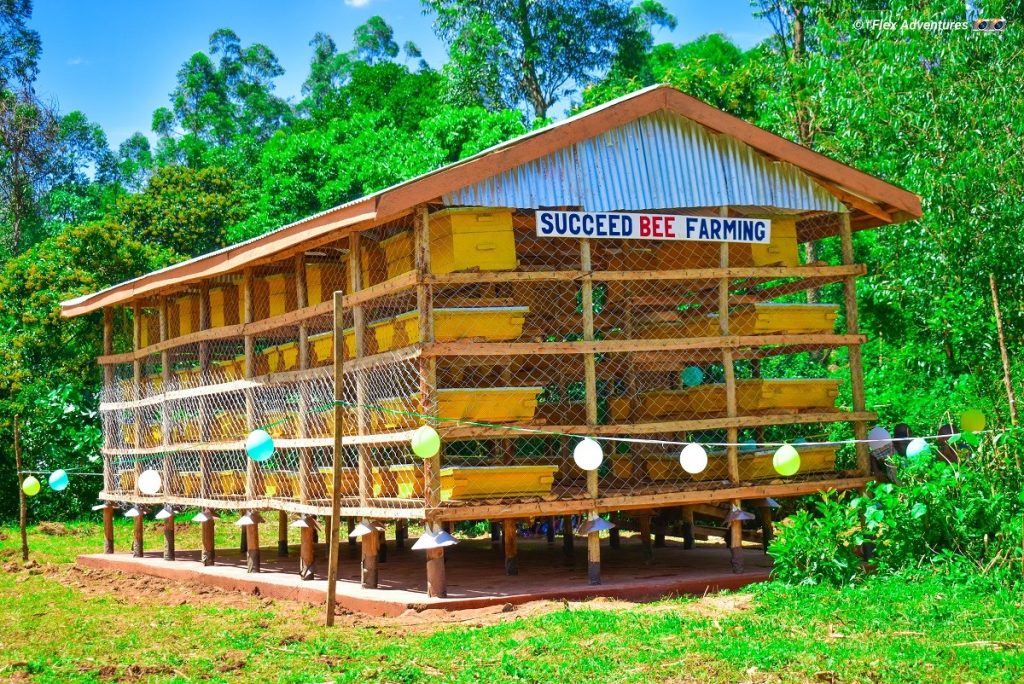
Bee Keeping Technology Adaptation
We have adopted the modern beehives (Ekamoja-improved langstroth designs with high yields and modern apiary structures for maximum safety. Through training and networking, the project is set to incorporate modern beekeeping technologies in terms of breeding, processing and value addition.
Sustainable Honey Harvesting
Why It Matters:
Overharvesting honey can stress colonies, making them more susceptible to disease and reducing their ability to survive the winter.
How to Implement:
- Only harvest surplus honey, leaving enough stores for the bees to survive the winter and periods of scarcity.
- Use gentle methods for honey extraction that minimize stress on the bees.
- Consider the timing of our harvest to align with natural cycles and ensure bees have time to replenish their stores.
Training of Champions
the champions work together in sharing skills, knowledge and materials, where necessary to the rest of the caregivers. This network is envisaged to gradually grow as other beekeepers also graduate into champions specializing in specific areas.
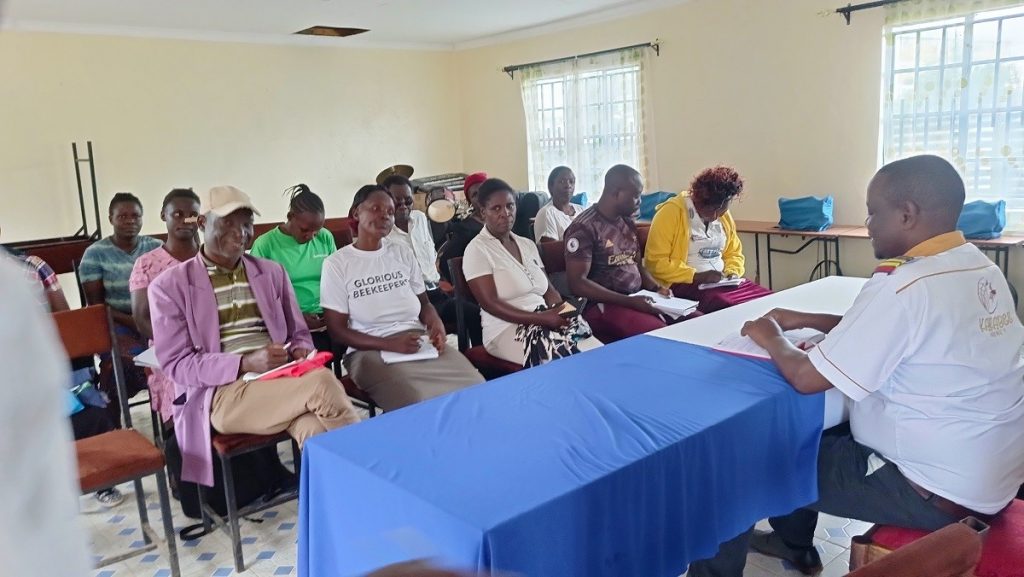
the champions work together in sharing skills, knowledge and materials, where necessary to the rest of thecaregivers. This network is envisaged to gradually grow as other beekeepers also graduate into championsspecializing in specific areas.
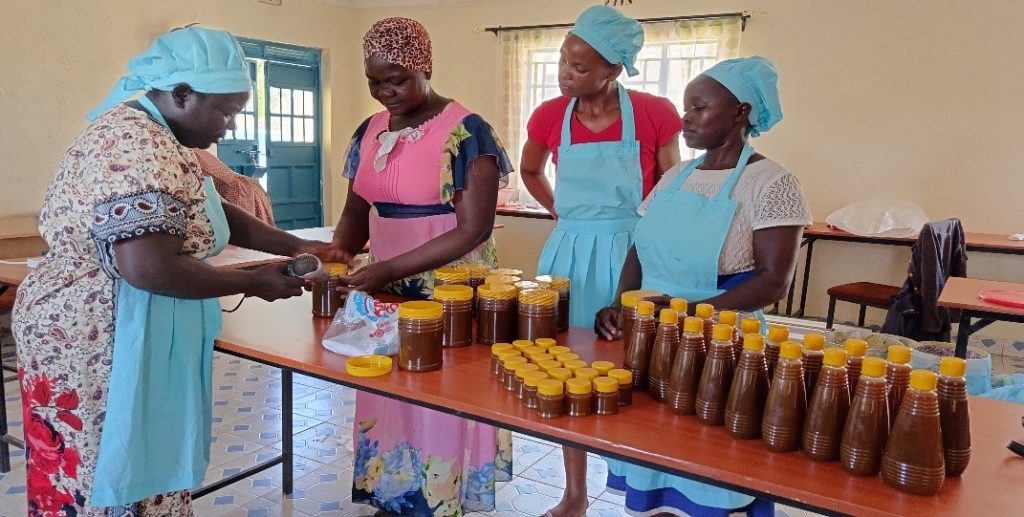
Education and Community Engagement
Why It Matters:
Education is key to changing practices and attitudes towards beekeeping and conservation. Engaging with the community can spread awareness and foster a collective effort towards sustainable beekeeping.
How we will implement:
- Host workshops or open days at your apiary to educate the public about bees and sustainable beekeeping.
- Participate in local conservation efforts and initiatives to protect and restore bee habitats.
- Share your knowledge and experiences with other beekeepers to promote best practices.
Common Group Activities
- With the formation and strengthening of caregiver beekeeping groups, five groups are fully registered by social services with clear leadership from among the caregivers themselves. Each group operates its own bank account.
- All the groups to have Savings & Lending activities. These activities keeps the groups running through regular meetings which entails discussions on the progress of beekeeping project.
Networking and Market Linkages
We have networked and continue to partner with key stakeholders for trainings, processing and marketing services. For instance, Pedni Apiaries provides free training on inspection and processing, the County Government through Shinyalu Sub County Livestock department is considering including three groups in their plans etc.
Other Strategies to Improve/Support the Beekeeping Project
Support measures need to be implemented that specifically target beekeeping and the beekeeping industry. These will focus on the following:
- Involving beekeepers in the broader agricultural debate (to find a sustainable balance among the different activities.
- Increasing beekeepers’ knowledge and skills so that they can adopt and become more resilient.
- Beekeeping is not just harvesting honey. The following actions are recommended to improve/support the sector:
- Support the development of small and medium-sized enterprises (SMEs), innovation and modernization of equipment.
- Support continuous training on sustainable beekeeping.
- Promote the utilization of indigenous honeybee subspecies.
- Implement market/control measures promoting high standards for hive products.
- Promote the development of beekeepers’ sacco and join existing functional cooperatives.
- Favor a multispectral approach that enables caregivers to engage with stakeholders, institutions and professionals at different levels.
- Provide centralized data (e.g. apiary density, agricultural land use, ongoing blooming) to assist beekeepers in their decision-making.
Conclusion
Sustainable beekeeping is not just about the health of the bees; it’s about the health of our planet. By adopting these practices, beekeepers can play a pivotal role in supporting biodiversity, enhancing ecosystems, and ensuring the sustainability of our food systems. Remember, every small action counts towards a larger impact. Let’s work together to create a brighter, healthier future for our bees and our planet.
Editor: Jared Likuyi: PD

